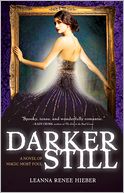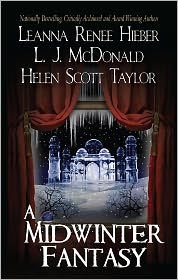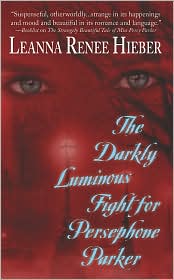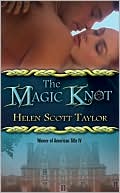 Darker Still, by Leanna Renee Hieber, is a Victorian ghost story with a twist. The strange romanticism of Victorian spiritualism was particularly suited to this haunting tale of a painting that had captured rather more than just the likeness of its handsome subject.
Darker Still, by Leanna Renee Hieber, is a Victorian ghost story with a twist. The strange romanticism of Victorian spiritualism was particularly suited to this haunting tale of a painting that had captured rather more than just the likeness of its handsome subject.
Natalie Stewart was struck mute at the age of 4 when she witnessed her mother’s death under the wheels of a runaway carriage. When our story begins, the year is 1880, and Natalie has returned to her father’s New York City townhouse after her schooling in the Connecticut Asylum. The Asylum is a school for children with unfortunate handicaps like Natalie’s; some are blind, some are deaf, some are crippled, but all are well-to-do. As is Natalie, since her father is an important man at the Metropolitan Museum of Art.
An intriguing new painting has arrived in New York. It is a portrait of the late Lord Denbury. Denbury is a compelling subject in his own right, young, aristocratic and handsome. Dead by his own hand just after the portrait was completed, distraught over the death of his parents. His case is tragic. But there is something about the painting itself: it seems as if the man’s spirit inhabits the painting, almost as if he is somehow alive in that canvas.
The story of the tragic young lord compels Natalie to visit the current owner of the portrait, Mrs. Northe, in spite of the fact that Natalie can only “speak” either by writing or by sign language. But Mrs. Northe is eager to meet Natalie. She almost seems to be waiting for her…and Mrs. Northe knows how to sign!
When Natalie is brought before the painting of Lord Denbury, she is certain, she feels, that Denbury is trapped in the painting. Each time she looks at the painting, she sees that something has changed, something has been moved. In the painting, Lord Denbury is writing on the desk, asking her questions, communicating with her!
 Natalie takes Mrs. Northe into her confidence, fearful that she will be thought mad. But when Mrs. Northe believes her, they conduct an experiment. Natalie touches the painting, and falls in–to the world of the painting, where Lord Denbury waits for her to save him.
Natalie takes Mrs. Northe into her confidence, fearful that she will be thought mad. But when Mrs. Northe believes her, they conduct an experiment. Natalie touches the painting, and falls in–to the world of the painting, where Lord Denbury waits for her to save him.
On that other side of the canvas, Natalie must face her greatest hopes, and her greatest fears, in order to have the chance at a real life. The one thing that she feared her handicap had placed forever beyond her reach.
Escape Rating B+: This was a neat story to be reading the night before Halloween. Very gothic, with an added slice of the Picture of Dorian Gray thrown in for good measure. Just a slice.
While I enjoyed Natalie as a character, I found that having the entire story told from her first-person point-of-view to be a little limiting. I wanted to know a lot more about why the other characters were doing the things they did. Mrs. Northe’s motivations were not as clear as they might have been. Was her flirtation with Natalie’s father a ruse, or was she genuinely interested? Why did the demon choose Denbury in the first place? What society of devils? Who else is involved? I still have questions.
And how are Natalie and Denbury going to get out of the pickle they’re in? When is the next book?????




